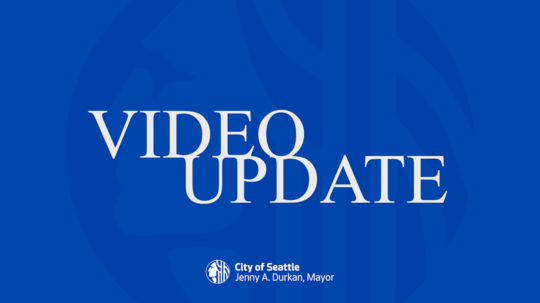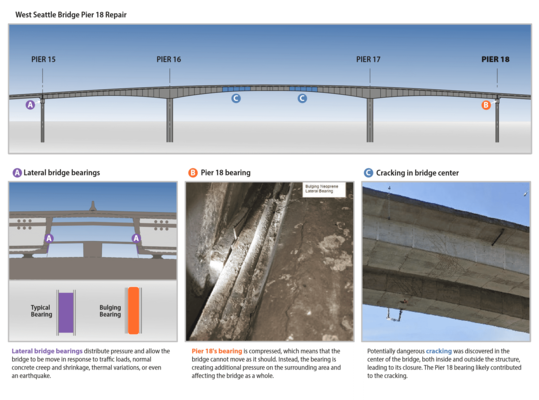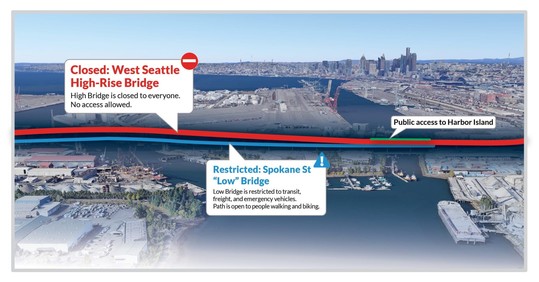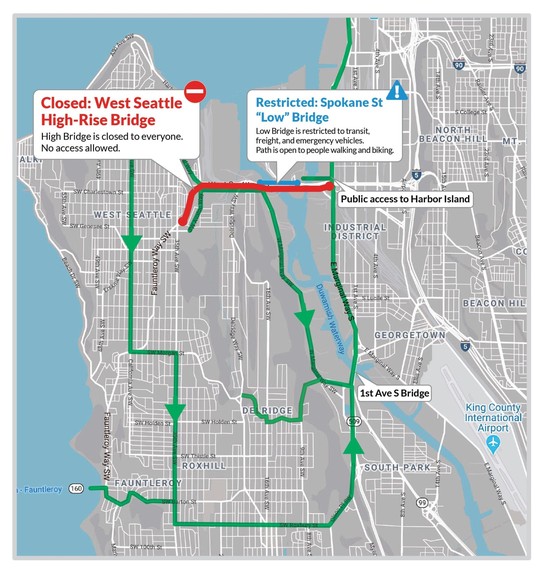|
The COVID-19 pandemic is one of the most consequential events our City will experience in its history. We’ve seen our way of life completely change, in part due to mandatory physical distancing measures that are saving lives and helping slow the spread of the virus. A new report from the Institute for Disease Modeling suggest distancing efforts have been saving lives because of our collective efforts in King County, but these efforts must remain in place in the coming weeks to prevent a rebound in the number of cases and deaths.
There’s no doubt that these necessary measures are taking a toll on working families in our City and state, especially as many were already struggling with affordability in our city. Our region is transitioning from having one of the lowest unemployment rates anywhere, to seeing unemployment claims soar statewide. Now more than ever, many of our communities are experiencing food insecurity.
Early on in this crisis, we created a program to provide 6,250 Seattle families grocery vouchers. This program to provide $800 in grocery vouchers has been critical as individuals and families wait for financial assistance from the state and federal government.
 Thanks to the incredible generosity of Oak View Group and NHL Seattle, we can expand the program for an additional 1,000 workers impacted by COVID-19 vouchers that can immediately be used at any Washington state Safeway store to purchase food and household goods, not including tobacco, alcohol, lottery tickets, and fuel. For more information on this program, click here.
The City will continue to expand the program as much as possible to help more displaced workers these grocery vouchers. If you or your organization is interested in donating to the grocery voucher program, contact Office of Sustainability and Environment director Jessica Finn Coven at [email protected].
We know that for many families, now is the first time they may have experienced food insecurity. And for so many others, the COVID-19 pandemic has exacerbated an existing struggle. The Seattle-region is proud to be home to so many community-led efforts to combat food insecurity and get healthy, affordable food into the hands of working people. Here’s a quick collection of resources if you or someone you know is struggling with food insecurity:
- The City’s Human Services Department (HSD) created an interactive Food Resource Map that shows local food banks, free meals, and student meal pick-ups. Explore the map and find food options near you: https://tabsoft.co/3b4Pvow.
- With schools closed for the rest of the academic year, Seattle Public Schools is offering free lunches for all Seattle public schools students every week day between 11 a.m. and 1 p.m. Learn more and find a pickup location near you: https://bit.ly/2RvxY15.
- Food Lifeline and Northwest Harvest are combating hunger and increasing access to healthy food during the COVID-19 pandemic. If you or someone you know is experiencing food insecurity during this time, please explore this website for resources that can help: https://foodlifeline.org/need-food/.
The City of Seattle also has a comprehensive COVID-19 website to help you navigate food, child care, small business, and other resources. To find a breakdown of all city, state, and nonprofit food resources, visit our website now: http://www.seattle.gov/mayor/covid-19#foodsupport.
Our city has been working on many new initiatives as it relates to rental assistance, meals, and support for artists and small businesses, but we know it is not enough for those who are struggling. Ultimately, we need the federal government to provide more assistance for working people feeling the impact of this global pandemic.
Please know that I am so grateful to everyone in our city during these unprecedented circumstances. The world is truly looking at us as a model, and we will come through this largely because of our City’s kindness and compassion. Thank you for everything you’re doing.
And please be kind and stay healthy.
Sincerely,
 
 Click to watch this week's update
Since we closed the West Seattle High-Rise Bridge on March 23, we’ve been working tirelessly to determine next steps and share that information with everyone who uses and depends on the bridge.
Today the City shared what we know as of now and our plans moving forward as part of our commitment to consistent communication and transparency. It is clear that we need more information to determine the future of the West Seattle High-Rise Bridge.
It is not yet clear if repair of the bridge is feasible technically or financially. If repair is feasible, it’s likely this would only restore up to an additional decade of life to the bridge. In either case, we will need to replace the West Seattle High Rise-Bridge much sooner than promised when it opened in 1984. Further, should repair prove feasible, under a “best case” scenario we do not anticipate traffic returning to the bridge in 2020 or 2021.
Despite these challenges, we are exploring all options to preserve the integrity of the bridge so that we can make the best decision possible for the residents of West Seattle and all who rely on this critical infrastructure. Right now:
- We’re working to stabilize the bridge and prevent further cracking by fixing bearings on Pier 18 and constructing shoring support structures
- We’re exploring long-term solutions to see if it’s feasible to repair the bridge
- We’re enlisting help from experts across the country and forming a Technical Advisory Panel
- We’re working with local transit agencies to keep people moving to and from West Seattle
- And above all, we’ll remain nimble and flexible as we adapt to new information and needs
Through it all, safety is our number one priority. That is why we have been closely monitoring the bridge since 2013; why we took immediate action to close the bridge on March 23; why we’ve restricted access for the Low Bridge to transit, freight, and emergency vehicles; why we’re installing intelligent sensor equipment to monitor any changes to the bridge and send real-time alerts 24/7; and, why safety will continue to be our north star as we work to reconnect West Seattle to the rest of the region over the Duwamish waterway.
 The first step to stabilize the bridge was to remove the weight of 100,000 vehicles a day.
Our crews have been out inspecting the bridge for new and growing cracks every day since March 23. They’ve seen that cracks continue to grow, but at a slower rate than before. This is good news that confirms immediately removing traffic from the bridge was a necessary step.
The next step is to make repairs on one of the support structures on the west side of the bridge, also known as Pier 18, to further slow or stop the cracking and preserve the integrity of the bridge.
 Pier 18 needs bearing replacements. Bridge bearings sit between the bridge’s roadway and the support piers holding it up. Bearings allow the bridge to move in response to traffic loads, normal concrete creep and shrinkage, thermal variations, or even an earthquake.
Bearings located at Pier 18 of the West Seattle High-Rise Bridge are currently compressed and bulging, indicating that they’re “restrained.” Because of the restrained bearing, the structure can’t move as a bridge typically should. Instead, the bearing is creating additional pressure on the surrounding area and affecting the bridge as a whole. This problem has likely contributed to the potentially dangerous cracking in the center of the bridge.
Over the next few months, bridge engineers will work with the contractor to determine the best way to “release” the bearings. This will likely involve building a temporary platform to perform the work and then using specialized equipment to precision-demolish the concrete surrounding the bearing, place the new bearings, and then pour the new concrete. This will release some of the pressure that the bridge is experiencing and allow it to move as it was designed.
The next step will be to install temporary external support structures called shoring.
Shoring is necessary to help support and stabilize the bridge as we continue to assess repair feasibility, timeline, and costs. After we complete the Pier 18 repairs, this will add additional support to ensure the bridge doesn’t crack under its own weight elsewhere.
We’ll need to obtain customized and unique equipment to shore the bridge. Because this takes a long time to both design and create, we’ll order this equipment as soon as possible so that it will be ready to install as the Pier 18 repair work is comes to an end in late 2020.
 The future of the bridge remains unclear.
The Pier 18 repairs and shoring are to stabilize the bridge right now. It’s still not known if repairing the bridge back to function is possible.
If repairs are feasible, the best-case scenario is that they will provide up to 10 years of additional use, which means we’ll have to replace the West Seattle High-Rise Bridge much sooner than it’s original, anticipated lifespan.
Everyone rightfully wants to know, “when will the bridge reopen?” and it’s frustrating that we can’t answer this question today – in part because we don’t have all the information we need to know that reopening the existing bridge will be possible. What we can say, however, is that it’s highly unlikely that the bridge will be open to traffic in 2020 or 2021.
We are at 0 percent design, and each step will impact what’s feasible and how long it will take. For example, the Pier 18 stabilization efforts will shed light on the broader condition of the bridge. We’ll gain greater clarity as we complete this and shoring process.
Our plans are guided by outside experts.
The deterioration of the West Seattle High-Rise Bridge and the needed short-term repairs are unique and complex. We’re forming a Technical Advisory Panel of experts from across the county to help bolster our actions moving forward. They will provide independent qualitative review and offer insight, constructive feedback, and validation as needed. The panel will be made up of professionals who are experts in bridge design and construction, geotechnical, marine, and maritime.
 People living and working in West Seattle need reliable access across the Duwamish waterway.
The closure of the West Seattle High-Rise Bridge is an inconvenience for everyone who lives and works in West Seattle and we are working diligently to determine a permanent solution.
 Today, during the Stay Home, Stay Healthy order, our reroutes to the 1st Ave S Bridge are sufficient with our below-average traffic levels. Once the stay home orders are lifted, however, and more people return to regular commute routines and other activities, there will be a greater strain on our arterial roads.

Over the last month, the City has worked independently and in partnership with the County and State to fight the spread of COVID-19 and to bring much needed relief to the region during this critical time. Below are highlights on the work the City did this week and updates on previous announcements.
-
Mayor Jenny Durkan Announces Initial 250 Grantees of the Small Business Stabilization Fund, Calls on Private Sector and Philanthropy to Help Support Future Grants: This week, the City announced the initial 250 grantees of the City’s $2.5 million Small Business Stabilization Fund. The fund provides $10,000 grants to small businesses financially impacted by COVID-19. Nearly 9,000 small businesses applied for the first round of the City’s Small Business Stabilization Fund, demonstrating that the need goes far beyond what the City can provide without further support from the private sector, philanthropic partners and economic relief from the federal government. With loans and grants available at the state and federal level, OED has also created a comprehensive resource page for workers and small businesses impacted by COVID-19 and is providing technical assistance to support our small businesses.
-
City Has Now Opened 28 Classrooms of Emergency Child Care, Offering Care to More than 230 Kids of Essential Workers: This week, the City announced it has opened 28 classrooms of Emergency Child Care to offer more than 230 spaces for children of essential workers. The Emergency Child Care program offers no-cost childcare to families of healthcare professionals, first responders, and pharmacy and grocery workers who are on the front lines of the COVID-19 response. Workers in the healthcare, first responder, pharmacy, and grocery sectors are invited to apply for the program on the Department of Education and Early Learning website. DEEL has also partnered with various employers and partner networks representing these essential sectors to identify families in need of care.
-
City of Seattle Announces Deployment of Six 24/7 Hygiene Stations: In addition to the creation of new 24/7 shelters with access to hygiene services and places for individuals experiencing homelessness to stay who have and are recovering from COVID-19, this week the City of Seattle announced the deployment of six new hygiene stations. The new 24/7 access facilities are located at Victor Steinbrueck Park, Waterfront Park, 45th Avenue and I-5, St Vincent DePaul Food Bank, University Heights Center, and Bell Street Park. With the closures of community centers and libraries, these six facilities result in a total of 26 new portable toilets and 12 handwashing resources added in the past two weeks, addressing the urgent hygiene needs of the City’s most vulnerable residents during the COVID-19 pandemic.

|